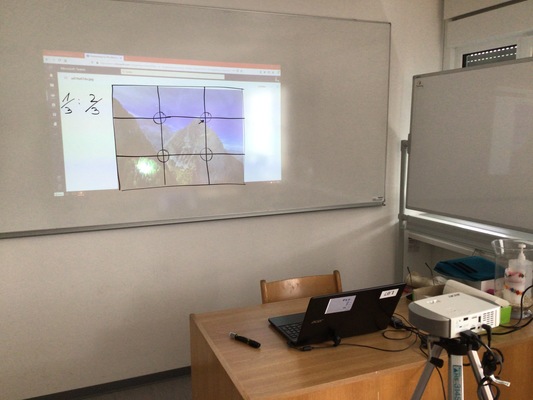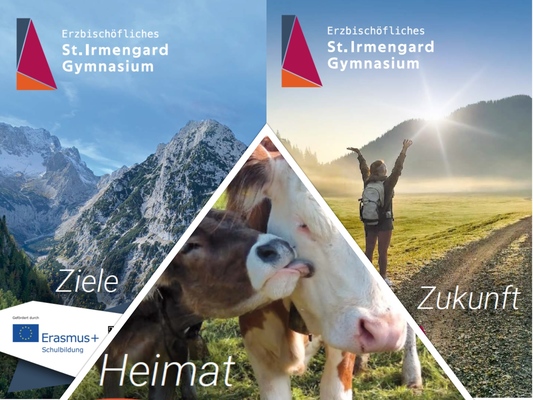This is the most important part of the German currculum concerning English as 1st foreign language:
General competencies
- The pupils understand longer utterances spoken in important varieties of the standard language and at an almost natural pace as well as authentic audio and video texts on topics related to the lesson under realistic conditions (e.g. short documentations, simple discussion groups), provided they contain largely known or accessible language material.
- They understand more demanding and increasingly also authentic texts (e.g. travel reports), develop them largely independently with the help of appropriate reading techniques (e.g. extensive reading) and the bilingual dictionary, and in addition to the content structure and conspicuous formal and linguistic design features ( e.g. style, emphasis) also the intention to make a statement and comment on it.
- They express themselves orally and in writing on a broader spectrum of general topics (e.g. education, vacation jobs, consumption and media behavior of young people), whereby they pay attention to clear thought guidance and linguistic correctness, express their own opinion with the help of arguments and examples increasingly differentiated and adapt your texts to the addressee and the communication situation, e.g. Pay attention to the use of subject-specific vocabulary and formal correctness. They speak fluently and actively help shape conversations (e.g. changing and resuming topics, polite interruptions); They present information on a wide range of topics in short presentations, e.g. information on ethnic groups.
- They also take from longer texts from various everyday situations or on a broader spectrum of topics (e.g. information about a stay abroad) situation-related information, reproduce this verbally or in writing in the other language and ensure that it is designed in a way that is appropriate for the addressee.
- They react increasingly differentiated to the content and emotional impact of literary texts (e.g.short story,short play) and film sequences and interpret them independently. In their creative attempts at design (e.g. drafting alternative courses of action), they are increasingly resorting to creative means; in different conversation situations they put themselves in assigned roles.
- On the basis of geographical, historical, political and social basic knowledge of the UK, the USA and selected Commonwealth countries (Australia, New Zealand) as well as initial insights into the professional world (e.g. internship), they will encounter foreign perspectives and problems through comparative studies discussion in an understanding manner and questioning one's own values and behavior (e.g. consumer behavior, sustainability). They recognize the importance of English as a lingua franca, act culturally appropriately and politely in a broad spectrum of everyday situations (e.g. expressing suggestions, wishes or criticism), and classify new, culturally determined experiences.
- They apply a wide range of learning and development strategies largely independently, consciously design their individual learning process and also use methods of error analysis and avoidance. They are open-minded, but also critical of the media and consider its potential and risks. They use a variety of analog and digital aids (e.g. bilingual dictionaries) for targeted, independent information retrieval as well as for repetition and learning.
- The communicative skills and linguistic resources acquired in grade 9 correspond roughly to level B1 of theCommon European Framework of Reference for Languages.
Every grammatical phenomenon appears in the following only in the category that describes it most aptly and only in the year in which it appears for the first time. In order to ensure sustainable learning, repeating and practicing individual phenomena at appropriate intervals, also in subsequent grades, is essential. Unless otherwise stated, all of the phenomena mentioned must be mastered receptively and productively in the written and oral area.
Competency expectations and content
The students ...
- express themselves linguistically and stylistically appropriately and express themselves increasingly differentiated:
- Relative clauses:non-defining; Sentence-commenting relative clauses
- Modal verbs:would,used to
- sequence of tenses: overview of tense / aspect, overview of expressing the future
- participle constructions, especilaly as a means of linking and shortening sentences
- functions of the-ingforms and delimiting them from infinitive constructions (overview)
- linguistic means for expressing emphasis and emphasis, especially emphasis with do
- reflect utterances of others:
- Indirect speech in all time levels
In the following, with the exception of the individual vocabulary, the lexical elements specific to the respective year level are listed. To ensure sustainable learning, regular repetition and use of the lexicon in new contexts, also in subsequent grades, is essential.
Competency expectations and content
The students ... have
- an appropriately differentiated basic vocabulary (including most irregular verbs) and idiomatic expressions on first job-related and a broader range of personal situations and the subject areas listed under 9.5 (important terms from the areas of consumption and Media behavior, sustainability as well as for describing educational systems, the professional world and for preparing applications).
- have a large number of supplementary vocabulary tailored to their individual interests.
- Master conversational phrases(e.g. short answers likeSo do I./Me neither.) and use strategies for paraphrasing and reformulating flexibly.
- have the necessary vocabulary for increasingly differentiated personal expression of opinion, for the realization of writing intentions in argumentative texts and for creating text coherence.
- use differentiated vocabulary for the verbalization of pictorial and graphic representations as well as basic technical terms necessary for text indexing and interpretation.
- know typical vocabulary elements of another English language variety (AUS / NZ).
Text and media competence
Competence and content
The pupils ...
- Expectations develop the content of informative, narrative, appellative and argumentative texts within the framework of listening / listening + watching comprehension and reading comprehension, e.g. B. newspaper reports and comments, letters to the editor, reports, interviews, commercials, short stories.
- also answer more complex content questions and simpler questions about the formal design of texts (content structuring, conspicuous linguistic as well as design elements typical for the respective medium), capture implicit information (e.g. speaker posture, intention to have an effect), interpret open statements, differentiate between information and expression of opinion and summarize essential aspects of more demanding texts; they verbal information from pictorial and graphic representations, eg. from info graphics, statistics, photos, illustrations.
- deal with narrative, poetic and dramatic texts (literary short forms such as short story, short play, poem and song; possibly readings) and film sequences, experience their immediate emotional impact and make their first independent attempts at interpretation.
- write their own reasoned statements taking into account the design criteria typical for the medium, explain and comment on texts (including pictorial and graphic representations as well as their use in different media), present facts and create factual letters, e.g. CV, application, letter to the editor.
- create their own texts independently and increasingly use creative means in their creative attempts at writing (e.g. continuing, shaping and rewriting stories, drafting alternative courses of action); they also simulate less familiar communication situations (e.g. job interviews) and put themselves in assigned roles.
- take from youth-friendly, linguistically appropriate authentic film sequences (e.g. literature adaptations, simple reports, documentaries, news), also on more complex topics and problems, important information, possibly using subtitles; they consciously perceive the effect of other cinematic design means (e.g. figure drawing).
- by dealing with different texts increasingly recognize the potential and risks of media independently.
In addition to the curriculum in English, we have to fulfill the expectation to teach our students ICT skills and the correct use of digital media.
October 2020:
As an aftermath to the meeting in Corsica, we revised the photo workshop while choosing our pictures for the collaborative Erasmus Days poster:

The students were asked to suggest pictures that they had taken. In the workshop we talked about the criteria of a good photo before the students voted for their favourite pictures.
The three students who had submitted the winning photos were awarded a small prize. Their photos were used to produce advertising posters.

We also reflected on a good attitude towards modern media:
Charter for a good attitude towards modern media.docx
Together with their bulletin about their marks, the German students will receive their "Kompetenzpass"
Kompetenzpass_Social.pdf